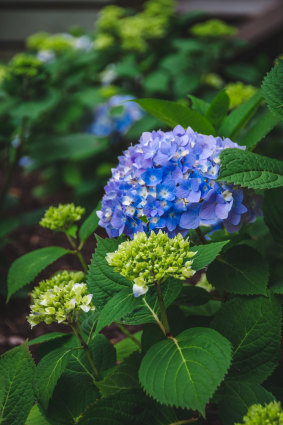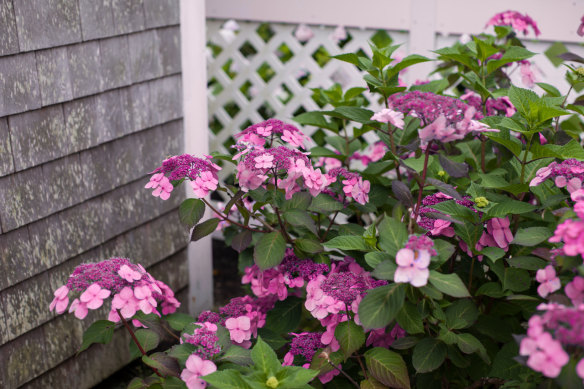The foliage plants in my friend’s little courtyard made her happy all winter, until suddenly they didn’t. She wants some flowers. It’s a common urge come spring; who doesn’t want to join that party of colour and fragrance.

Hydrangeas are a great option for those without a garden. Credit:Robin Powell
Balcony and courtyard gardeners who desire flowers have a tough time because most flowering plants want six hours of sun a day to do the job well. “Lavender”, my friend begs. “Some red geraniums.” “Daisies?” She entertains fantasies of snapdragons and massed petunias. But with her few hours of morning sun, disappointment followed by pests and diseases is the likely outcome of her dream.
Then I suggest hydrangeas, and her mood improves.
Hydrangeas love a bit of morning sun, as long as it does not extend into the hottest part of the day, and will even flower in shade, as long as it is bright.
They also do well in pots. In Tokyo, where hydrangeas are synonymous with the hot, rainy summer, potted hydrangeas are sold during the Hydrangea Festival at the Hakusan Shrine, where more than 3000 hydrangeas bloom. (Which rates as undercatering as far as temple planting goes – there are more than 50,000 hydrangeas at Hodoji temple in Chiba prefecture.)
Buyers take them home from the temple, enjoy them inside or out for the season and then bin them. If you want to keep these old mophead hydrangeas in a pot long-term, you’ll need a container at least 500mm wide.

Hydrangeas bloom from mid-spring through autumn with a bit of judicious dead-heading.Credit:Robin Powell
Hydrangeas are native to Japan and were taken to Europe by early plant collectors where they were bred into the plants we’re familiar with. In 1970 a Japanese grower, Hiroshi Ebihara, imported European hydrangeas and started a breeding program which resulted in compact hydrangeas with large multi-coloured flowers. They are sold in Australia as the “Mai-Ko” series.
Other dwarf hydrangeas have followed, and the most recent breakthrough is even better – repeat –flowering. In an old hydrangea there is one flowerhead per flowering stem per season. Plants in the “Endless Summer” range will produce a new flower on the old stem if the old flower is removed. So now you can have new flowers on a hydrangea from mid-spring through autumn with a bit of judicious dead-heading. The “Original” is the classic pink or blue mophead, while “Blushing Bride” is white, maturing to pink. Both grow to about a metre by a metre.
Stay connected with us on social media platform for instant update click here to join our Twitter, & Facebook
We are now on Telegram. Click here to join our channel (@TechiUpdate) and stay updated with the latest Technology headlines.
For all the latest Life Style News Click Here
For the latest news and updates, follow us on Google News.
